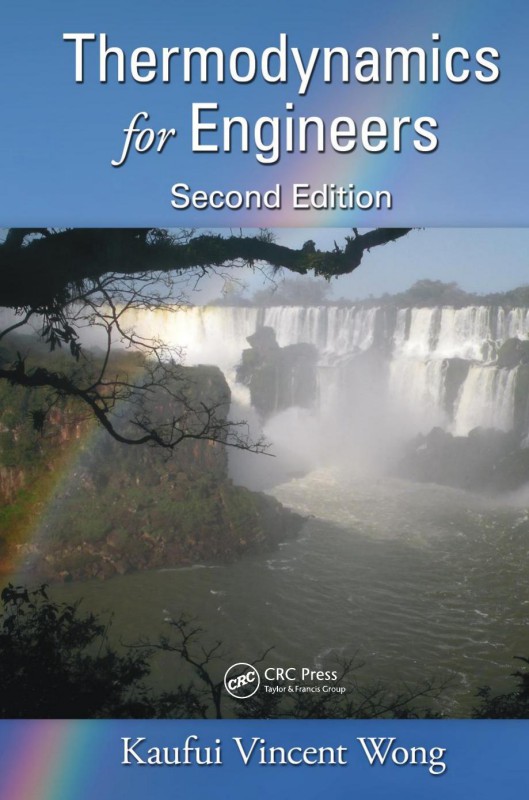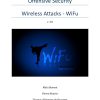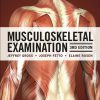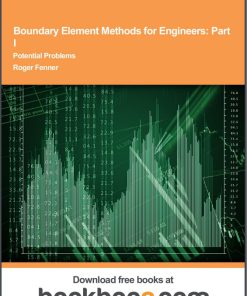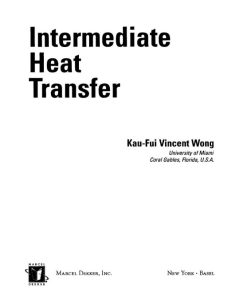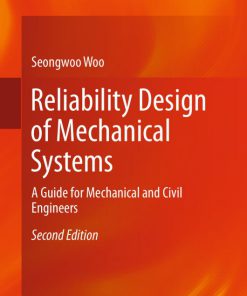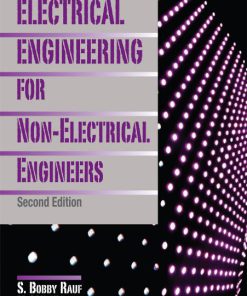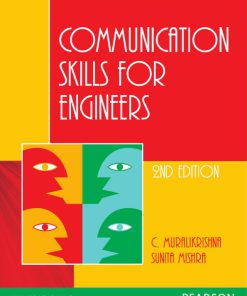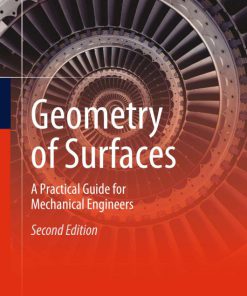Thermodynamics for Engineers 2nd Edition by Kaufui Vincent Wong 1032581921 9781032581927
$50.00 Original price was: $50.00.$25.00Current price is: $25.00.
Authors:Kaufui Vincent Wong , Series:Mechatronics Engineering [96] , Tags:Science; Mechanics; Thermodynamics; Technology & Engineering; Mechanical; Power Resources; General , Author sort:Wong, Kaufui Vincent , Ids:9781439845592 , Languages:Languages:eng , Published:Published:Aug 2011 , Publisher:CRC Press , Comments:Comments:Aspiring engineers need a text that prepares them to use thermodynamics in professional practice. Thermodynamics instructors need a concise textbook written for a one-semester undergraduate course—a text that foregoes clutter and unnecessary details but furnishes the essential facts and methods.Thermodynamics for Engineers, Second Edition continues to fill both those needs. Paying special attention to the learning process, the author has developed a unique, practical guide to classical thermodynamics. His approach is remarkably cohesive. For example, he develops the same example through his presentation of the first law and both forms of the second law—entropy and exergy. He also unifies his treatments of the conservation of energy, the creation of entropy, and the destruction of availability by using a balance equation for each, thus emphasizing the commonality between the laws and allowing easier comprehension and use. This Second Edition includes a new chapter on thermodynamic property relations and gives updated, expanded problem sets in every chapter. Accessible, practical, and cohesive, the text builds a solid foundation for advanced engineering studies and practice. It exposes students to the “big picture” of thermodynamics, and its streamlined presentation allows glimpses into important concepts and methods rarely offered by texts at this level. What’s New in This Edition: Updated and expanded problem sets New chapter on thermodynamic property relations Updated chapter on heat transfer Electronic figures available upon qualifying course adoption End-of-chapter poems to summarize engineering principles
Thermodynamics for Engineers 2nd Edition by Kaufui Vincent Wong- Ebook PDF Instant Download/Delivery. 1032581921, 9781032581927
Full download Thermodynamics for Engineers 2nd Edition after payment
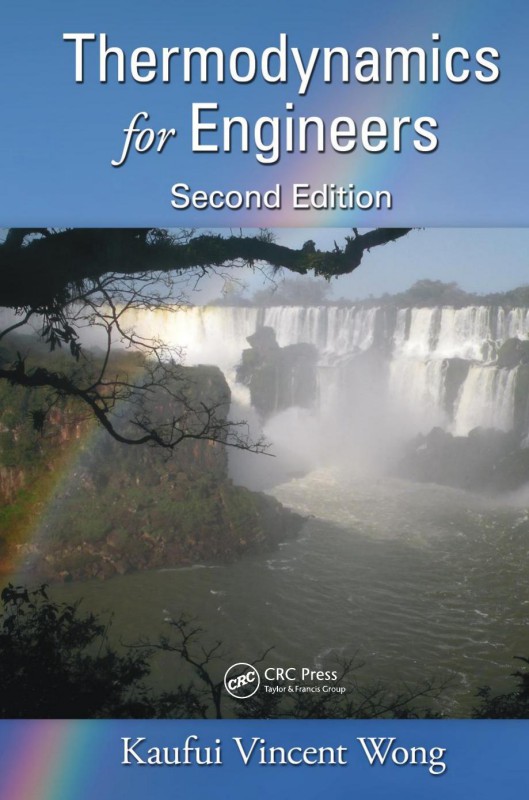
Product details:
ISBN 10: 1032581921
ISBN 13: 9781032581927
Author: Kaufui Vincent Wong
Aspiring engineers need a text that prepares them to use thermodynamics in professional practice. Thermodynamics instructors need a concise textbook written for a one-semester undergraduate course-a text that foregoes clutter and unnecessary details but furnishes the essential facts and methods.Thermodynamics for Engineers, Second Edition continues
Thermodynamics for Engineers 2nd Table of contents:
1 Concepts, Definitions, and the Laws of Thermodynamics
1.1 Introduction
1.2 Definitions
FIGURE 1.1 Schematic of a steam power plant.
1.2.1 A Note about Units
1.3 Pressure
(1.1)
FIGURE 1.2 Absolute, atmospheric, gage, and vacuum pressures.
Example 1.1
Problem
Solution
Example 1.2
Problem
Solution
1.4 Forms of Work
1.4.1 Mechanical Forms of Work
(1.2)
(1.3)
FIGURE 1.3 Work as energy transferred by a moving boundary.
(1.4)
(1.5)
(1.6)
(1.7)
(1.8)
FIGURE 1.4 The amount of work is dependent on the path between two states.
Example 1.3
Problem
Solution
1.4.2 Spring or Elastic Work
(1.9)
(1.10)
Example 1.4
Problem
Solution
1.4.3 Electrical Work
(1.11)
(1.12)
(1.13)
Example 1.5
Problem
Solution
1.4.4 Work of Polarization and Magnetization
(1.14)
(1.15)
Example 1.6
Problem
Solution
1.4.5 Torsion Work
(1.16)
Example 1.7
Problem
Solution
1.4.6 Work in Changing a Surface Area
(1.17)
Example 1.8
Problem
Solution
1.5 Temperature
(1.18)
(1.19)
1.6 Heat
1.7 Laws of Thermodynamics and Mass Conservation
1.8 Systematic Problem-Solving Approach
Problems
Concepts and Definitions
Pressure
Forms of Work
Temperature
Computer, Design, and General Problems
2 Properties of Pure Substances
2.1 State Principle
2.2 P-v-T Surface
FIGURE 2.1 P-v-T surface of a substance that contracts on freezing.
FIGURE 2.2 P-v, T-v, and P-T diagrams.
FIGURE 2.3 P-T diagram for water.
FIGURE 2.4 Phase change.
2.3 Phase Change
2.4 Thermodynamic Property Data
2.4.1 Pressure, Specific Volume, and Temperature
(2.1)
Example 2.1
Problem
Solution
Example 2.2
Problem
Solution
Example 2.3
Problem
Solution
Example 2.4
Problem
Solution
2.4.2 Specific Internal Energy and Enthalpy
(2.2)
(2.3)
(2.4)
(2.5)
Example 2.5
Problem
Solution
Example 2.6
Problem
Solution
Example 2.7
Problem
Solution
Example 2.8
Problem
Solution
2.4.3 Reference Values
2.5 Specific Heats and Their Relationships
(2.6)
(2.7)
(2.8)
(2.9)
(2.10)
(2.11)
(2.12)
(2.13)
(2.14)
(2.15)
(2.16)
(2.17)
(2.18)
(2.19)
(2.20)
(2.21)
2.6 Processes
FIGURE 2.5 P-v diagram indicating various processes.
FIGURE 2.6 P-T diagram indicating various processes.
FIGURE 2.7 T-S diagram indicating various processes.
FIGURE 2.8 P-v diagram.
2.6.1 Polytropic Processes
(2.22)
(2.23)
(2.24)
(2.25)
(2.26)
(2.27)
(2.28)
(2.29)
Example 2.9
Problem
Solution
2.6.2 Reversible Processes
2.7 Ideal-Gas Equation of State
(2.30)
(2.31)
2.8 Compressibility Factor
(2.32)
(2.33)
(2.34)
(2.35)
(2.36)
Example 2.10
Problem
Solution
Example 2.11
Problem
Solution
2.9 Other Equations of State
(2.37)
(2.38)
Example 2.12
Problem
Solution
Problems
Thermodynamic Property Data
Processes
Ideal-Gas Equation of State and Compressibility Factor
Other Equations of State
Computer, Design, and General Problems
3 Mass Conservation and the First Law of Thermodynamics
3.1 Mass Conservation
(3.1)
(3.2)
3.2 First Law of Thermodynamics
3.2.1 Stored Forms of Energy
FIGURE 3.1 Control volume for mass conservation.
3.2.2 Internal (Thermal) Energy, U
3.2.3 (Gravitational) Potential Energy
(3.3)
FIGURE 3.2 Concept of (gravitational) potential energy for a body (system).
(3.4)
3.2.4 Kinetic Energy
(3.5)
(3.6)
FIGURE 3.3 Concept of kinetic energy for a body (system).
TABLE 3.1 Forms of Energy
3.2.5 Chemical Energy
3.2.6 Nuclear Energy
3.3 First Law for a Control Volume
FIGURE 3.4 Control volume: (a) initial mass in the control volume, (b) incoming mass into the control volume, (c) mass exiting the control volume, (d) final mass in the control volume, and (e) control volume with one inlet and one exit.
(3.7)
(3.8)
(3.9)
(3.10)
(3.11)
(3.12)
(3.13)
(3.14)
(3.15)
Example 3.1
Problem
Solution
Example 3.2
Problem
Solution
Example 3.3
Problem
Solution
3.4 First Law for a Control Mass
(3.12)
(3.16)
(3.17)
Example 3.4
Problem
Solution
Example 3.5
Problem
Solution
Example 3.6
Problem
3.5 First Law Applied to Various Processes
3.5.1 Turbine
(3.18)
Example 3.7
Problem
Solution
Example 3.8
Problem
Example 3.9
Problem
Solution
3.5.2 Compressors and Pumps
(3.19)
(3.20)
Example 3.10
Problem
Solution
3.5.3 Throttling Devices
(3.21)
FIGURE 3.5 Throttling devices. (a) Globe valve and (b) orifice.
Example 3.11
Problem
Solution
3.5.4 Nozzles and Diffusers
(3.22)
FIGURE 3.6 Nozzle and diffuser (subsonic flow).
(3.23)
Example 3.12
Problem
Solution
3.5.5 Heat Exchangers
(3.24)
(3.25)
FIGURE 3.7 Heat exchanger. (a) A single control volume and (b) two separate control volumes.
Example 3.13
Problem
Solution
3.6 Thermodynamic Cycles
(3.26)
(3.27)
(3.28)
(3.29)
FIGURE 3.8 Schematic diagrams: (a) power cycles and (b) refrigeration and heat pump systems.
(3.30)
(3.31)
(3.32)
(3.33)
(3.34)
Example 3.14
Problem
Solution
Example 3.15
Problem
Solution
Example 3.16
Problem
Solution
Example 3.17
Problem
Solution
Problems
First Law Applied to Various Processes
Thermodynamic Cycles
First Law General
Computer, Design, and General Problems
4 Second Law of Thermodynamics and Entropy
4.1 Introduction
FIGURE 4.1 Perpetual motion machines (PMM). (a) PMM 1; (b) PMM 2; (c) PMM 3.
4.1.1 The Kelvin-Planck and the Clausius Statements
FIGURE 4.2 Combination that violates the Clausius statement.
FIGURE 4.3 Combination that violates the Kelvin-Planck statement.
4.2 Statements of the Second Law
(4.1)
(4.2)
4.2.1 Thermodynamic Temperature Scale
(4.3)
(4.4)
(4.5)
(4.6)
(4.7)
4.3 Entropy of a Pure, Simple Compressible Substance
(4.8)
4.3.1 T ds Equations
(4.9)
(4.10)
(4.11)
(4.12)
(4.13)
(4.14)
(4.15)
(4.16)
(4.17)
(4.18)
4.3.2 Entropy Change of an Ideal Gas
(4.19)
(4.20)
(4.21)
(4.22)
(4.23)
(4.24)
(4.25)
(4.26)
(4.27)
(4.28)
(4.29)
(4.30)
(4.31)
(4.32)
4.3.3 Entropy Change of an Incompressible Substance
(4.33)
(4.34)
(4.35)
4.3.4 Important Facts about Entropy
FIGURE 4.4 (T, s) diagram.
(4.36)
Example 4.1
Problem
Solution
Example 4.2
Problem
Solution
4.4 Carnot Cycle
FIGURE 4.5 Heat engine operating on a Carnot cycle.
FIGURE 4.6 Refrigerator operating on a reversed Carnot cycle.
FIGURE 4.7 (T,s) diagram of a Carnot cycle.
(4.37)
(4.38)
(4.39)
(4.40)
(4.41)
Example 4.3
Problem
Solution
Example 4.4
Problem
Solution
4.5 Second Law in Entropy for a Control Volume
FIGURE 4.8 Control volume: (a) initial mass in the control volume; (b) incoming mass into the control volume; (c) mass exiting the control volume; (d) final mass in the control volume; (e) control volume with one inlet and one exit.
(4.42)
(4.43)
(4.44)
(4.45)
(4.46)
(4.47)
(4.48)
(4.49)
(3.14)
Example 4.5
Problem
Solution
4.5.1 Application to the Power Cycle
(4.50)
FIGURE 4.9 Schematic of a simple power plant.
(4.51)
(4.52)
(4.53)
(4.54)
(4.55)
(4.56)
4.5.2 Application to the Refrigeration Cycle
FIGURE 4.10 Vapor-compression refrigeration cycle.
(4.57)
(4.58)
(4.59)
(4.60)
(4.61)
(4.62)
(4.63)
(4.64)
(4.65)
(4.66)
(4.67)
Example 4.6
Problem
Solution
4.6 Second Law in Entropy for a Control Mass
(4.68)
(4.69)
(4.70)
Example 4.7
Problem
Solution
Example 4.8
Problem
Solution
Example 4.9
Problem
Solution
4.7 Isentropic Processes
(4.71)
(4.72)
(4.73)
(4.74)
(4.75)
(4.76)
(4.77)
(4.78)
Example 4.10
Problem
Solution
4.7.1 Relative Pressure and Relative Specific Volume
(4.79)
(4.80)
(4.81)
(4.82)
Example 4.11
Problem
Solution
4.8 Isentropic Efficiencies
4.8.1 Isentropic Efficiency of Turbines
(4.83)
(4.84)
FIGURE 4.11 H-s diagram for the actual and isentropic processes of a turbine.
Example 4.12
Problem
Solution
4.8.2 Isentropic Efficiency of Pumps and Compressors
(4.85)
(4.86)
(4.87)
(4.88)
FIGURE 4.12 H-s diagram for the actual and isentropic processes of a pump or a compressor.
Example 4.13
Problem
Solution
4.8.3 Isentropic Efficiency of Nozzles
(4.89)
Example 4.14
Problem
Solution
Example 4.15
Problem
Solution
Example 4.16
Problem
Solution
Example 4.17
Problem
Solution
Example 4.18
Problem
Solution
Example 4.19
Problem
Solution
4.9 Reversible Steady-Flow Processes
(4.90)
(4.91)
(4.92)
(4.93)
(4.94)
(4.95)
(4.96)
(4.97)
(4.98)
FIGURE 4.13 Interpretation of ∫ v dp.
(4.99)
(4.100)
4.9.1 Reversible Steady-Flow Polytropic Processes
(4.101)
(4.102)
(4.103)
(4.104)
(4.105)
(4.106)
Example 4.20
Problem
Solution
Problems
Introduction
Entropy of a Pure, Simple Compressible Substance
Carnot Cycle
Isentropic Processes
Isentropic Efficiencies
Second Law in Entropy for a Control Volume
Second Law in Entropy
Reversible Steady-Flow Processes
Second Law in Entropy General
Computer, Design, and General Problems
5 Exergy (Availability) Analysis
5.1 Availability
5.1.1 Dead State
5.1.2 Exergy (Availability) of a Substance
(5.1)
(5.2)
(5.3)
Example 5.1
Problem
Solution
Example 5.2
Problem
Solution
5.2 Second Law in Exergy (Availability) for a Control Volume
(5.4)
(5.5)
FIGURE 5.1 Control volume: (a) initial mass in the control volume, (b) incoming mass into the control volume, (c) mass exiting the control volume, (d) final mass in the control volume, and (e) control volume with one inlet and one exit.
(5.6)
(5.7)
(5.8)
(5.9)
(5.10)
(5.11)
(3.14)
Example 5.3
Problem
Solution
(a)
(b)
(c)
Example 5.4
Problem
Solution
Example 5.5
Problem
Solution
Example 5.6
Problem
Solution
5.3 Second Law in Exergy for a Control Mass
(5.9)
(5.12)
(5.13)
Example 5.7
Problem
Solution
Example 5.8
Problem
Solution
5.4 Exergy Transfer
(5.14)
(5.15)
5.5 Second Law (Exergetic) Efficiency
(5.16)
(5.17)
(5.18)
(5.19)
(5.20)
5.5.1 Second Law Ratio to Measure Thermal Environmental Impact
(5.21)
(5.22)
Example 5.9
Problem
Solution
Example 5.10
Problem
Solution
5.5.2 Second Law (Exergetic) Efficiencies of Systems
(5.23)
(5.24)
(5.25)
Example 5.11
Problem
Solution
Example 5.12
Problem
Solution
5.5.2.1 Turbines, Compressors, and Pumps
(5.26)
(5.27)
(5.28)
Example 5.13
Problem
Solution
FIGURE 5.2 Counterflow noncontact heat exchanger.
5.5.2.2 Noncontact Heat Exchangers
(5.29)
(5.30)
5.5.2.3 Direct-Contact Heat Exchangers
FIGURE 5.3 Direct-contact heat exchanger.
(5.31)
(5.32)
5.5.3 Application to the Power Cycle
(5.33)
FIGURE 5.4 Power cycle schematic.
(5.34)
(5.35)
(5.36)
(5.37)
(5.38)
(5.39)
(5.40)
(5.41)
(5.42)
(5.43)
Example 5.14
Problem
Solution
Example 5.15
Problem
Solution
Example 5.16
Problem
Solution
Example 5.17
Problem
Solution
Example 5.18
Problem
Solution
5.6 Practical Considerations
Problems
Exergy
Second Law in Exergy for a Control Volume
Second Law in Exergy for a Control Mass
Second Law Ratio to Measure Thermal Environmental Impact
Second Law Efficiencies of Systems
Application to the Power Cycle
Second Law in Exergy General
Computer, Design, and General Problems
6 Vapor Power Systems
6.1 The Carnot Vapor Cycle
6.2 Rankine Cycle: Ideal Cycle for Vapor Power Cycles
FIGURE 6.1 Carnot cycle.
FIGURE 6.2 Ideal Rankine cycle.
(6.1)
(6.2)
FIGURE 6.3 Effect of condenser pressure on net work.
FIGURE 6.4 Effect of boiler pressure on net work.
Example 6.1
Problem
Solution
6.3 Reheat Rankine Cycle
(6.3)
FIGURE 6.5 (a), (b) Reheat Rankine cycle.
(6.4)
Example 6.2
Problem
Solution
Example 6.3
Problem
Solution
6.4 The Regenerative Rankine Cycle
6.4.1 Open Feedwater Heaters
FIGURE 6.6 (a), (b) Regenerative Rankine cycle with open feedwater heater.
(6.5)
(6.6)
(6.7)
(6.8)
6.4.2 Closed Feedwater Heaters
FIGURE 6.7 (a), (b) Regenerative Rankine cycle with closed feedwater heater.
Example 6.4
Problem
Solution
FIGURE E6.4 (a.i) Rankine cycle with no feedwater heater. (a.ii) T-s diagram of Rankine cycle with no open feedwater heater.
FIGURE E6.4 (b.i) Regenerative Rankine cycle with one open feedwater heater. (b.ii) T-s diagram of regenerative Rankine cycle with one open feedwater heater.
FIGURE E6.4 (c.i) Regenerative Rankine cycle with two open feedwater heaters. (c.ii) T-s diagram of regenerative Rankine cycle with two open feedwater heaters.
6.5 Air Preheater
Example 6.5
Problem
Solution
6.6 Economizer
Example 6.6
Problem
Solution
6.7 Availability Analysis of Vapor Power Cycles
(6.9)
(6.10)
(6.11)
(6.12)
Example 6.7
Problem
Solution
6.8 Cogeneration
FIGURE 6.8 Ideal cogeneration plant.
FIGURE 6.9 Schematic of a practical cogeneration plant.
(6.13)
(6.14)
(6.15)
(6.16)
(6.17)
Example 6.8
Problem
Solution
6.9 Binary Vapor Cycles
FIGURE 6.10 (a), (b) Mercury-water binary vapor cycle.
Example 6.9
Problem
Solution
6.10 Combined Gas-Vapor Power Cycles
FIGURE 6.11 (a), (b) Combined gas-steam power cycle.
Example 6.10
Problem
Solution
Problems
Rankine Cycle
The Reheat Rankine Cycle
The Regenerative Rankine Cycle
Air Preheater and Economizer
Availability Analysis of Vapor Power Cycles
Cogeneration
Binary Vapor and Combined Gas-Vapor Power Cycles
General Vapor Power Cycle
Computer, Design, and General Problems
7 Thermodynamic Property Relations
7.1 The Maxwell Relations
(7.1)
(7.2)
(7.3)
(7.4)
(7.5)
(7.6)
(7.7)
(7.8)
(7.9)
(7.10)
(7.11)
(7.12)
(7.13)
Example 7.1
Problem
Solution
(a)
(b)
Example 7.2
Problem
Solution
Example 7.3
Problem
Solution
Example 7.4
Problem
Solution
Example 7.5
Problem
Solution
7.2 The Clapeyron Equation
(7.14)
(7.15)
(7.16)
(7.17)
Example 7.6
Problem
Solution
(7.18)
(7.19)
(7.20)
Example 7.7
Problem
Solution
7.3 General Relations for Thermodynamic Properties
7.3.1 Internal Energy Changes
(7.21)
(7.22)
(7.23)
(7.24)
(7.25)
(7.26)
7.3.2 Enthalpy Changes
(7.27)
(7.28)
(7.29)
(7.30)
(7.31)
(7.32)
(7.33)
(7.34)
(7.35)
7.3.3 Entropy Changes
(7.36)
(7.37)
(7.38)
(7.39)
Example 7.8
Problem
Solution
(a)
(b)
Example 7.9
Problem
Solution
(a)
7.3.4 Specific Heats Cv and CP
(7.40)
(7.41)
(7.42)
(7.43)
(7.44)
(7.45)
(7.46)
(7.47)
Example 7.10
Problem
(a)
(b)
(c)
(d)
(e)
7.4 The Joule-Thomson Coefficient
(7.48)
FIGURE 7.1 Isenthalpic lines on a T-P diagram for a substance.
(7.49)
Example 7.11
Solution
7.5 Enthalpy, Internal Energy, and Entropy Changes of Real Gases
7.5.1 Enthalpy Changes of Real Gases
(7.50)
(7.51)
(7.52)
(7.53)
(7.54)
(7.55)
(7.56)
7.5.2 Internal Energy Changes of Real Gases
(7.57)
7.5.3 Entropy Changes for Real Gases
(7.58)
(7.59)
FIGURE 7.2 Process path of ideal states used to evaluate the entropy changes of real gases during process 1–2.
(7.60)
(7.61)
Problems
The Maxwell Relations
The Clapeyron Equation
General Relations for Thermodynamic Properties
The Joule—Thomson Coefficient
Computer, Design, and General Problems
8 Principles of Energy (Heat) Transfer
8.1 Conduction
(8.1)
(8.2)
(8.3)
FIGURE 8.1 Fourier’s law applied to a plane wall.
FIGURE 8.2 Fourier’s law applied to a plane wall with three layers.
(8.4)
Example 8.1
Problem
Solution
Example 8.2
Problem
Solution
Example 8.3
Problem
Solution
Example 8.4
Problem
Solution
Example 8.5
Problem
Solution
(i)
(ii)
(iii)
(iv)
Example 8.6
Problem
Solution
(i)
(ii)
(iii)
(iv)
(v)
(vi)
8.2 Radiation
(8.5)
(8.6)
(8.7)
(8.8)
(8.9)
(8.10)
(8.11)
(8.12)
(8.13)
Example 8.7
Problem
Solution
Example 8.8
Problem
Solution
8.3 Convection
(8.14)
FIGURE 8.3 Newton’s law of cooling.
(8.15)
Example 8.9
Problem
Solution
Example 8.10
Problem
Solution
8.4 Combined Convection and Radiation
(8.16)
(8.17)
(8.18)
(8.19)
(8.20)
Example 8.11
Problem
Solution
Example 8.12
Problem
Solution
Example 8.13
Problem
Solution
Example 8.14
Problem
Solution
Problems
Conduction
Radiation
Convection
Combined Convection and Radiation
Computer, Design, and General Problems
Back Matter
Appendix A: A-Series Tables (SI)
TABLE A.1 Critical Constants
TABLE A.2 Properties of Selected Ideal Gases at 25°C, 0.1 MPa (or Saturation Pressure If It Is < 0.1 MPa)
TABLE A.3 Ideal-Gas Properties of Air, Standard Entropy at 0.1 MPa
TABLE A.4 Ideal-Gas Properties of Nitrogen, Entropies at 0.1 MPa
TABLE A.5 Ideal-Gas Properties of Oxygen, Entropies at 0.1 MPa
TABLE A.6 Beattie-Bridgeman Constants
FIGURE A.1 Nelson-Obert generalized compressibility chart—low pressures (0 < Pr < 1.0). (From Cengel, Y.A. and Boles, M., Thermodynamics, McGraw-Hill, New York, 1994. With permission.)
FIGURE A.2 Nelson-Obert generalized compressibility chart—intermediate pressures (0 < Pr < 7). (From Cengel, Y.A. and Boles, M., Thermodynamics, McGraw-Hill, New York, 1994. With permission.)
FIGURE A.3 Nelson-Obert generalized compressibility chart—high pressures (0 < Pr < 40). (From Cengel, Y.A. and Boles, M., Thermodynamics, McGraw-Hill, New York, 1994. With permission.)
Appendix B: B-Series Tables (SI)
Thermodynamic Properties of Water
TABLE B.1 Saturated Water
TABLE B.2 Saturated Water Pressure First Independent Variable
TABLE B.3 Superheated Water Vapor
TABLE B.4 Compressed Liquid Water
Appendix C: C-Series Tables (SI)
Thermodynamic Properties of Ammonia
TABLE C.1 Saturated Ammonia
TABLE C.2 Superheated Ammonia Vapor
TABLE C.3 Compressed Liquid Ammonia
Appendix D: D-Series Tables (SI)
Thermodynamic Properties of Carbon Dioxide
TABLE D.1 Saturated Carbon Dioxide
TABLE D.2 Superheated Carbon Dioxide Vapor
TABLE D.3 Compressed Liquid Carbon Dioxide
Appendix E: E-Series Tables (SI)
Thermodynamic Properties of R-12
TABLE E.1 Saturated R-12
Table E.2 Superheated R-12 Vapor
Table E.3 Compressed Liquid R-12
Appendix F: F-Series Tables (SI)
Thermodynamic Properties of R-134a
TABLE F.1 Saturated R-134a
TABLE F.2 Superheated R-134a Vapor
TABLE F.3 Compressed Liquid R-134A
Appendix G: AA-Series Tables (US)
TABLE AA.1 Critical Constants
TABLE AA.2 Properties of Selected Ideal Gases at 77°F, 14.504 lbf/in.2 (or Saturation Pressure If It Is <14.504lbf/in.2)
TABLE AA.3 Ideal-Gas Properties of Air, Standard Entropy at 14.504 lbf/in.2
TABLE AA.4 Ideal-Gas Properties of Nitrogen, Entropies at 14.504 lbf/in.2
TABLE AA.5 Ideal-Gas Properties of Oxygen, Entropies at 14.504 lbf/in.2
TABLE AA-6 Beattie-Bridgeman Constants
Appendix H: BB-Series Tables (US)
Thermodynamic Properties of Water
TABLE BB.1 Saturated Water
TABLE BB.2 Superheated Water Vapor
Table BB.3 Compressed Liquid Water
Appendix I: CC-Series Tables (US)
Thermodynamic Properties of Ammonia
TABLE CC.1 Saturated Ammonia
TABLE CC.2 Superheated Ammonia Vapor
TABLE CC.3 Compressed Liquid Ammonia
Appendix J: DD-Series Tables (US)
Thermodynamic Properties of Carbon Dioxide
TABLE DD.1 Saturated Carbon Dioxide
TABLE DD.2 Superheated Carbon Dioxide Vapor
TABLE DD.3 Compressed Liquid Carbon Dioxide
Appendix K: EE-Series Tables (US)
Thermodynamic Properties of R-12
TABLE EE.1 Saturated R-12
TABLE EE.2 Superheated R-12 Vapor
TABLE EE.3 Compressed Liquid R-12
Appendix L: FF-Series Tables (US)
Thermodynamic Properties of R-134a
TABLE FF.1 Saturated R-134a
TABLE FF.2 Superheated R-134a Vapor
TABLE FF.3 U.S. Compressed Liquid R-134a
People also search for Thermodynamics for Engineers 2nd:
2 thermodynamics laws
physics 2 thermodynamics
physics 2 thermodynamics equations
q thermodynamics
You may also like…
eBook PDF
Intermediate Heat Transfer 1st Edition by Kau Fui Vincent Wong ISBN 0824742362 9780824742362
eBook PDF
Communication Skills for Engineers 2nd edition by Muralikrishna ISBN 813173384X 9788131733844
eBook PDF
Lifecycle IoT Security for Engineers 1st edition by Kaustubh Dhondge 9781630818043 1630818046

